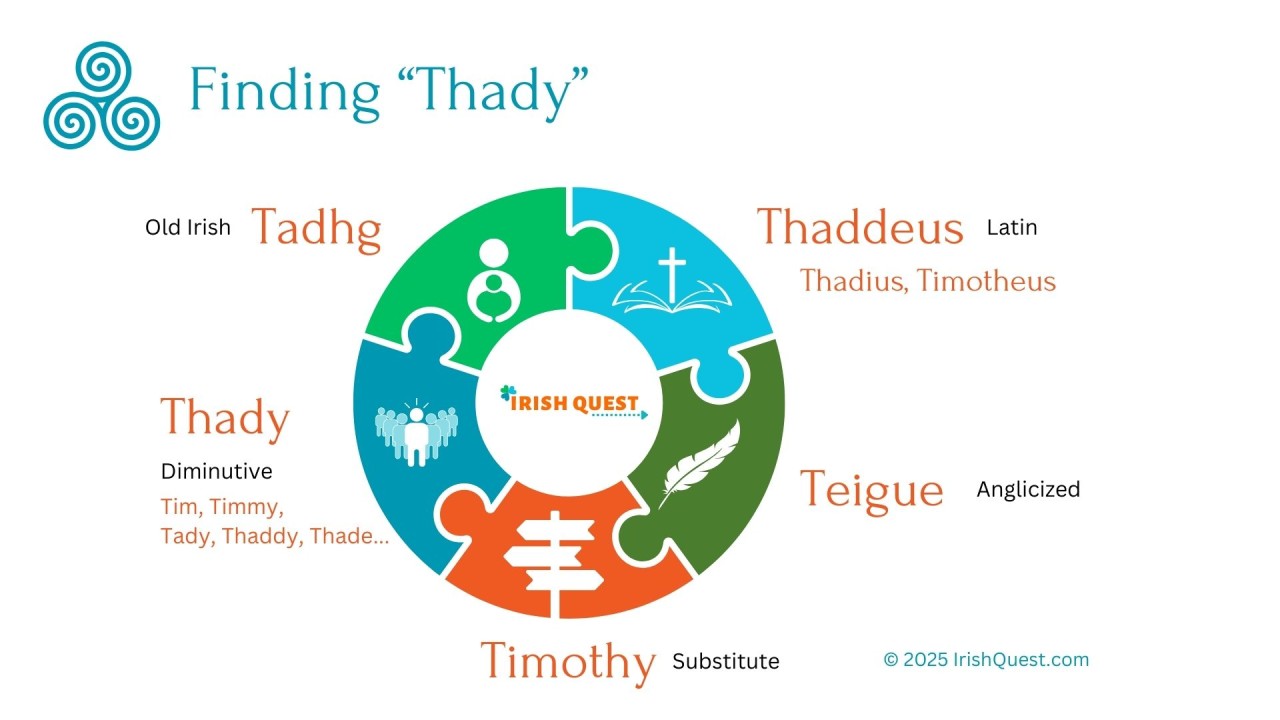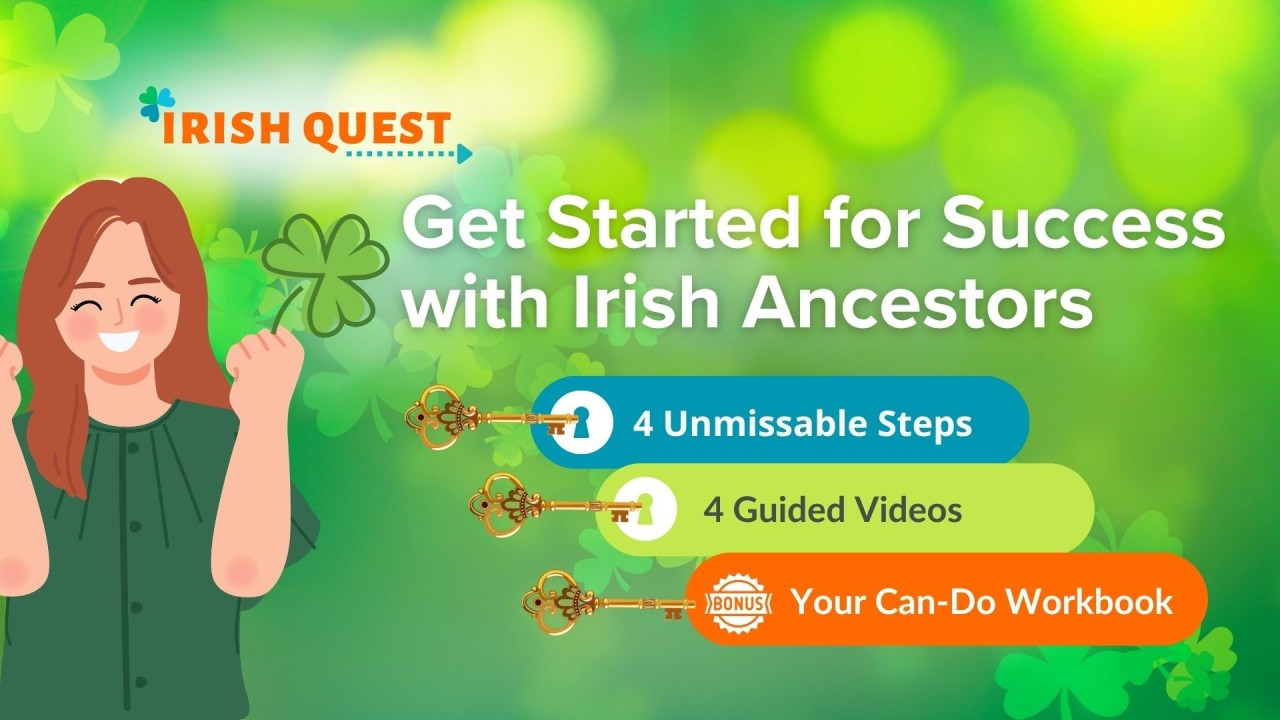Did My Ancestor Change Name? Irish Aliases Explained

Discover why your Irish ancestors may appear under different names, nicknames and aliases in historical records.
Irish Name Changes & Aliases Explained
Tracing your Irish ancestors can sometimes feel like chasing shadows. You might have strong leads on your ancestor’s name, birth, or place of origin - but when you search official records, they seem to vanish or appear under completely different names. The reason often lies in the widespread use of aliases, nicknames, and Latin in Irish record-keeping, especially for Old Irish Gaelic Names.
Understanding the nature of Irish aliases can help you break through that Irish genealogy brick wall.
Why Your Ancestor Used Aliases:
1. Latin & English Language Name Changes
In early 19th-century Ireland, over 90% of the population spoke Gaelige (Irish) as their first language, but official records—from Catholic church registers to civil documents—were mostly recorded in Latin or English. Parish priests and record keepers "translated" (Latinized or Anglicised) names based on their own knowledge and what was customary locally.
For instance, a given name like Sinéad could be entered in Latin registers as Johanna or Janeta, then later appear in civil records as Joan or Jane. The same person might appear under multiple different names depending on the record, causing confusion for family historians today.
If you suspect your ancestor might have used an alias (or two) search this database → Old Irish Names, Nicknames & Aliases.
2. Nicknames and Family Naming Traditions
Children were named for their grandparents, parents, uncles and aunts. So it was not uncommon for an Irish household to contain multiple individuals of the same first name. To tell them apart, the Irish used nicknames or added suffixes such as:
-
-een, -ie, or -ey meaning “little”
-
-óg (pronounced "ogue") meaning “young” or “junior”
-
Nicknames like Sonny (eldest boy), Sissy (eldest girl), or Baby (youngest daughter)
These Old Irish Nicknames were used daily but rarely matched official records. Instead, your ancestor might be recorded in Latin in church records, by a pet name in Census records, and by an Anglicised variant in tax or civil records.

3. Regional Pronunciation and Spelling
Different regions of Ireland pronounced old Gaelic Irish names differently, so when names were heard and recorded by English-speaking clerks or priests, many variants appeared. For example:
-
The Gaelic name Fergal was recorded as Farrell in Roscommon and Sligo,
-
As Farrigil in Donegal,
-
Farl in Cavan,
-
And Friel in Fermanagh.
Searches using only one spelling might miss these variants in online or archive records. Unusual spelling variants can also reveal an ancestor's county of origin!
4. Surnames as First Names (and Vice Versa)
Irish naming customs meant that some surnames, especially those with the prefixes Mac or O’, originated from ancient Gaelic personal names. It was common for surnames to also be used as first names in records, which can confuse researchers. For example, a record listing Farrell Bryan might be a mistranscription for a person named Bryan whose family surname is Farrell.
What This Means for Your Irish Genealogy Research
Your ancestor is very likely recorded under several different names and spellings over their lifetime. Why?
Wondering if your ancestor changed their name to avoid legal or social trouble? This is a common question asked by the novice researcher. However, the reason was more down to "culture of use".
In Ireland, your legal name is the one you are commonly known by through “use and repute” and our ancestors had no single "legal name" like we do today. They had multiple aliases as a matter of course and were very fluid in their use.
1. Old Irish Given Name (often of pre-Christian origin e.g. Tadhg)
2. Christian Name in Latin for Catholics (e.g. Timotheus / Thaddeus)
3. Phonetic spelling of #1 in English (e.g. Teigue for Tadhg)
4. English AKA derived from #2 (e.g. Timothy from Timotheus)
5. Nickname/ Pet Name (e.g. Thady from Thaddeus, Timmy, etc)

The key to finding them is to:
-
Keep an open mind about name variations, nicknames, and translations,
-
Use multiple spellings and English/Latin versions when searching,
-
Understand regional pronunciations that affect spelling differences,
-
Consider surnames used as forenames,
-
Know that official records rarely captured the local names and nicknames your ancestor used daily.
Join my free community to ask questions, share insights and learn more about Irish first names HERE.
Instead of disappearing, your ancestor may simply be hiding in plain sight with an unexpected alias.
Understanding Irish nicknames and aliases is key in Irish ancestry research. So before you delve into records do a little prep-work on Irish first name aliases to save yourself a lot of frustration and wasted time!

Irish ancestry research doesn't have to be as confusing as they say. The first key step is to get up close and personal with your ancestors aliases so you can find them on record faster and easier.
That is why I have broken it down into 4 unmissable Can-Do Steps in my latest workbook & mini-course:

Check out my special introductory offer here:
→ [ Get Started for Success with Irish Ancestors ]
Categories: : Irish Names
 Irene ó Irish Quest
Irene ó Irish Quest 